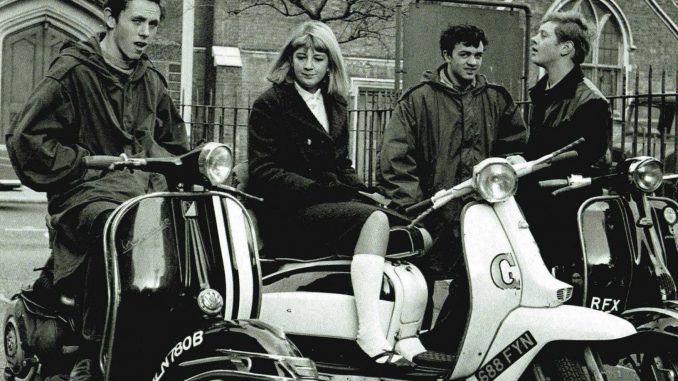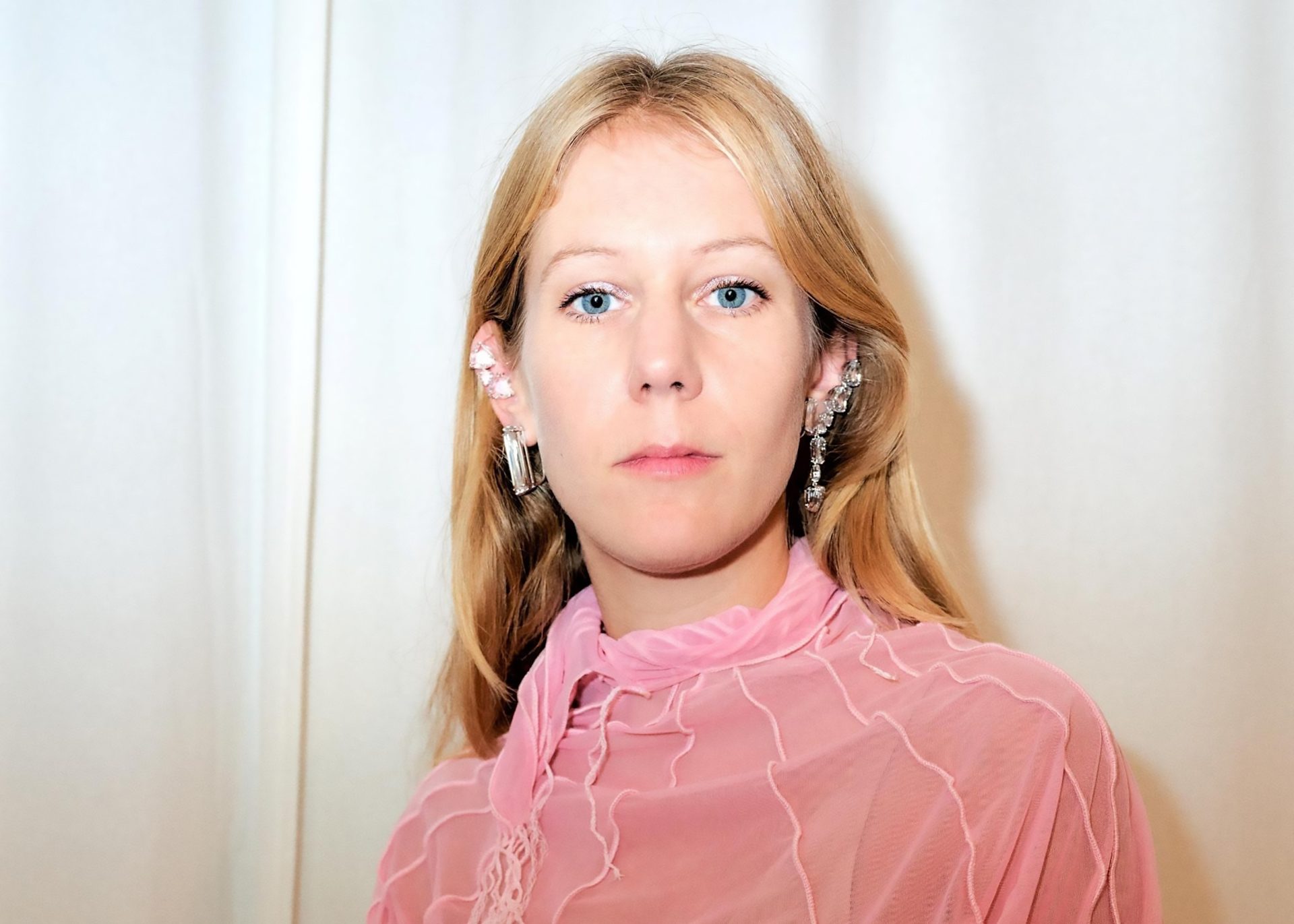There are some people who manage to make their style, and with it their own confidence in that style, appear virtually effortless, indeed laughably easy. Their existence seems to prove that, for some people, not only does it feel like child’s play to opt for a certain kind of clothing, fabrics or colors, but it also goes without saying that they look good or sometimes even incredible when wearing it. At the same time, it’s certainly a drastic decision – after all, the style remains unchanged by wind, weather, crisis or ill temper – and no doubt requires not only a certain strength of will but also the good fortune to not tire of one’s own look.
Gilbert & George undoubtedly have precisely such a style. The artist duo appears suited – or, should we say, in suits. After all, although they have a coordinated look (the same outfit), they do not wear the same version of it. I see this for myself in an image search, which reveals chic trousers and matching jackets in all manner of colors and patterns, along with colorful ties and quality shoes. With their style, Gilbert & George fit in with their city (London) and the style fits with their time (although at what time and in which city would an extravagant or well-fitting suit not be in style?)
Regardless, one of the styles to come out of London and become an international trend is Mod culture. As a subculture dating from the late 1950s, it developed among young, working-class Brits (and is still wearable today). Hence, when Gilbert & George first met and began collaborating more than 50 years ago in London, the Mod look (the name of which, incidentally, comes from “modernist”, which in turn can be traced back to Modern Jazz) was very much all the rage. And so, even in their early years, Gilbert & George came to be seen as a “living sculpture” in their suits.

Knitted polos, jacquard and paisley, simple yet fitted cuts, loafers, Chelsea boots. All classically conservative, certainly, chic and mainstream undoubtedly, but also entirely unconventional among the working class during the post-war period. Now, it is no doubt a mark of every youth movement to want to develop its own style and to represent its own attitude or lifestyle. Accordingly, by donning such attire the Mods were able to distance themselves from their parents’ generation and its habits and preconceptions, as well as from other subcultures like that of the simultaneously popular Teddy Boys (naturally, in every youth movement it’s also all about the music they listen to and revere, likewise a crucial distinguishing factor).
The suit as a sign of elegance, taste and social standing
When the fashion of the Mods was first evolving, men of certain classes naturally still wore suits and hats, and carried briefcases. A sure sign of elegance, taste, and at least a certain degree of social standing. Somewhere between respectable and gentleman, and boring and conformist. The impression promised good manners and assigned the wearer a role (of some importance) within society. Clothes have always served as a means of manifesting and clarifying wealth, status, power and belonging. Yet they could also always be deceiving, or could lose or regain different values. The acquisition of certain items of clothing or entire clothing styles is one way of breaking out of one’s own social group and presenting oneself as part of another. Clothes make the man, don’t they?

Mods in the 1960s, Image via https://www.reddit.com

Teddy-Boys, Image via www.cg.fashion
The youth culture of the Mods optimized the existing (male) dress code by taking inspiration from elsewhere. This meant they assimilated other trends and cultures such as the cut of French and Italian suits, ever combining and creating anew. They therefore refused to follow their own British tradition, and instead opened their eyes wide to other ideas. By appropriating multiple styles, they aimed to develop their own independent, original look. The (fashion) world opened up like a self-service counter that could be shamelessly raided. As a result, the Mods considered themselves cosmopolitan, modern and original, since they wanted to represent a changing Great Britain. One that was influenced by immigration and tolerance. In which class or skin color were of no importance. An ideal world.
The (fashion) world as a self-service counter
With regard to the fashions, it was the male Mods who represented the movement, not only wearing the (men’s) suits, but revolutionizing them for themselves (while women wore A-line dresses and cleanly cut pieces). The focus was on European and American fashions. The Mods’ music of choice was initially jazz and later also other music genres imported from across the Atlantic. They wanted to experience La Dolce Vita, “coolness”, and to represent intelligence and style-consciousness. They would race around the streets of London on Vespas and scooters and hang around in coffee shops. They sought out hard-to-find records and spent their money on buying and caring for their clothes.

Mods, Photo © Janette Beckman, Image via www.huckmag.com

Mods, Image via artreview.com
The aspiration to continually stay fresh, to be new and exciting, also calls for a certain fluidity: Slim-fit suits, as smart as they may be, can sometimes be fiendishly impractical. Turtlenecks were incorporated, ties were no longer essential, and wider-cut blousons appeared, followed later by parka jackets (practical for riding a scooter) and sometimes jeans. Hairstyles were somewhere between classically tidy short hair and bowl cuts. Logos were (initially) unwelcome (until the movement apparently developed its own, see “The Who”). Individualism was key, along with the ability to search for the right pieces until they were found. Off-the-peg fashion was frowned upon.
Innovation, a love of detail and consistency were lauded, with the result being that the Mods, with their bespoke suits, trousers and jackets, were thoroughly able to keep up with the upper classes, whereby an elite formed among the Mods themselves. Precisely in the movement that had originally rebelled against the elite. Chic, respectable and with a certain aura of status, extravagance and timelessness, their retro-bourgeoise style nevertheless endures to this day. As does the fight against the class system. And Gilbert & George are still sporting their suits, too.

